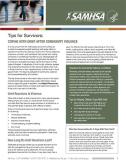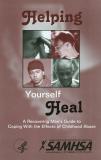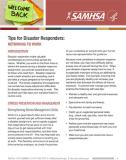
This fact sheet discusses tips on how to cope with grief after an incident of community violence. It introduces common signs of grief and anger, and offers tips for helping children deal with grief.
Units per Product
Download
Coping With Grief After Community Violence
File Type: PDF
File Size: 487 KB







